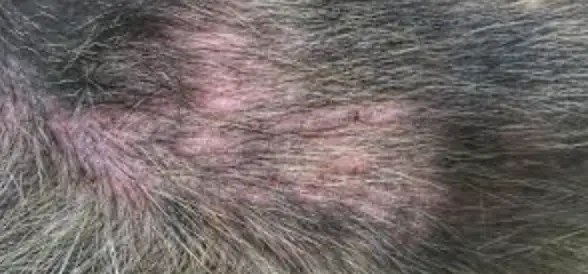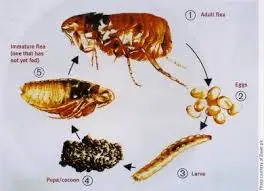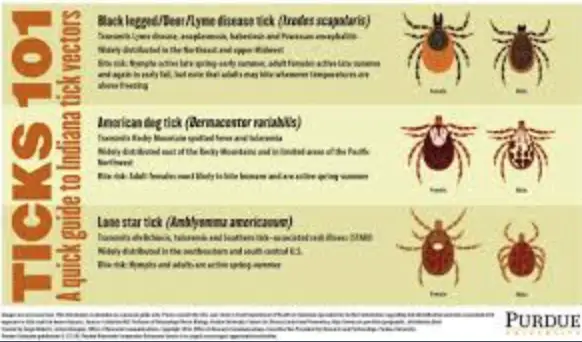Dogs that have fleas are dealing with pesky little parasites that seem to have a special knack for making our furry friends miserable. They’re small, wingless insects that feed on the blood of mammals, and dogs are often prime targets. Despite their tiny size, fleas can jump incredible distances, easily traveling from one host to another—this makes them quite the stealthy hitchhikers.
The lifecycle of fleas involves several stages, including larvae and pupae, which can thrive not just on your dog but also in your home. Once these critters find a place to settle, they’re tough to completely eradicate without consistent effort. Recognizing flea infestations early is crucial. Keep an eye out for symptoms like excessive scratching, hair loss, and small red bumps on your dog’s skin.
A dog suffering from fleas can experience a range of discomforts and complications. Beyond the itching, a flea bite can lead to allergic reactions in some dogs, resulting in more intense skin irritations or infections. Fleas are also notorious for carrying tapeworms that can infect your pet.
Spotting fleas might be tricky due to their size, but check your dog’s fur and skin regularly. Looking for flea dirt, which appears as tiny black specks (almost like pepper flakes), can be an effective way to identify an infestation before it gets out of hand. Treating flea issues promptly will save your pup from a lot of discomfort.
Why The Dogs Flea Pose a Danger to Your Canine Companion
Fleas are more than a nuisance; they can pose significant health risks to your beloved pet. These tiny parasites are vectors for several diseases and can trigger a variety of health problems in dogs.
A flea infestation can lead to flea bite dermatitis, an allergic reaction to flea saliva, causing severe itching, redness, and skin irritation. In turn, this can lead to secondary infections as your dog scratches and bites at the irritated areas, sometimes leading to hot spots, which are painful and prone to infection.

One of the more severe consequences of a flea infestation is anemia, especially in puppies or smaller dogs. Since fleas feed on blood, a severe infestation can result in significant blood loss, leading to weakness, lethargy, and even organ failure in extreme cases.
Additionally, fleas are notorious carriers of tapeworms. Dogs can ingest these parasites while grooming themselves or biting at flea-infested areas. Tapeworms can then reside in the digestive tract, causing weight loss, nutritional deficiencies, and general malaise.
Protecting your dog from fleas means preventing these health risks. Early detection and prompt treatment can mitigate the dangers associated with these parasites. Be proactive in your approach to flea control to ensure your dog remains healthy and comfortable.
Effective Strategies for Preventing Dog Fleas
Preventing fleas is all about diligence and keeping a few key strategies in mind. One of the most effective ways to ward off fleas is to maintain a consistent routine of flea prevention treatments. These treatments come in a variety of forms like topical applications, oral medications, and flea collars. Each has its pros and cons, so consider your dog’s needs and lifestyle.
Natural flea repellents can also provide a safeguard , particularly for pet owners who prefer to avoid chemicals. Essential oils like lavender and cedar, when diluted properly, can be used as natural deterrents. However, always consult with your vet before trying new remedies, to ensure safety and effectiveness.
Keeping your environment clean plays a significant role in flea prevention. Regular vacuuming of carpets and furniture can help keep flea eggs and larvae at bay. Wash your dog’s bedding frequently and consider using a flea spray for your home to break the lifecycle of fleas.
Don’t overlook the importance of yard maintenance as well. Mow your lawn regularly and clear away debris, as fleas often lurk in warm, shaded areas. For added protection, consider using nematodes, which are small worms that feed on flea larvae, as a natural way to reduce flea populations in your yard.
Routine check-ups can make a world of difference. Regular grooming sessions allow you to not only bond with your dog but also monitor for any signs of fleas. Use a fine-toothed flea comb to catch those fleas early. If spotted, act fast to tackle the issue before it escalates.
The Dogs Tick: What They Are and How to Prevent Them
Ticks are another common parasite that can wreak havoc on your dog’s health. Unlike fleas, ticks are arachnids and can transmit serious diseases through their bites. Recognizing tick species like deer ticks or dog ticks can help understand the specific threats they pose. Each type has its own environment and seasonality, but all can lead to health complications if not managed properly.
Tick bites might not cause significant immediate irritation, but they are vectors for dangerous diseases like Lyme disease, ehrlichiosis, and Rocky Mountain spotted fever. These conditions can lead to symptoms such as fever, joint pain, and severe fatigue in dogs, sometimes with long-lasting effects if not treated promptly.
Preventing ticks starts with vigilance. Keep your dog away from tick-prone areas like tall grasses and densely wooded regions, especially in peak season. Use veterinarian-recommended tick prevention products, which can include topical treatments, oral medications, and tick collars that repel these pests.
Environmental management is crucial in reducing the risk of ticks. Keep your yard well-trimmed and clear of underbrush to minimize tick habitats. If you frequently take your dog on hikes or camping trips, make sure to check them thoroughly for ticks immediately after returning home.
Regularly examine your dog, paying close attention to areas where ticks like to hide – under collars, between toes, and in the ears. If you find a tick, use fine-tipped tweezers to grasp it as close to the skin’s surface as possible and pull upward with steady, even pressure. Early removal prevents the transmission of diseases and keeps your dog healthy.
In Conclusion
I hope you found the information you were looking for to protect your dogs from fleas and ticks. Although these pests are small they sure do cause a lot of damage and discomfort to us and especially our canine friends.
If you have any questions about the above information or have your own story to share about flea or tick control, please leave a comment below. We will do our best to find the answers you are looking. Sharing your own experiences with others here could help them find a solution to getting rid of irritating bugs as well.
Thank you for visiting Fleas B Gone, have a great day 🙂







Hi there,
Thanks for the helpful article! I’ve been dealing with a flea issue for the past few weeks, and it’s been tough getting it under control even though I’ve been using a topical treatment. I’m wondering — how long does it usually take to fully get rid of fleas once you start treatment? Also, do you recommend treating the whole house even if I only see fleas on my dog? Appreciate any advice!
Hello Daniella, thank you for visiting Fleas B Gone. What kind of topical treatment? Is it a monthly treatment or a topical spray? If you are using a topical flea spray follow the directions on the bottle so that you know how often it can be used. I use a topical spray, that is made with essential oils so I can use it daily on my pets.
I highly recommend treating the inside and outside of your home as well to kill all of the fleas life stages before they have a chance to become adults. Even if you don’t see fleas anywhere else it’s highly likely that other stages such as the eggs, have fallen from your pets and are around your home.
You can learn more about treating the inside of your home HERE & the outside of your home for fleas HERE
If I can help you with anything else, please let me know 🙂
Hello!
Thank you for this informative article on flea prevention for dogs. As a pet owner with both a senior dog and a cat, I appreciate the emphasis on using gentle, age-appropriate treatments. It’s crucial to choose products that are safe for older pets, as their systems can be more sensitive to harsh chemicals. Additionally, ensuring that treatments are safe for both dogs and cats is essential to prevent any adverse reactions. I also found the advice on maintaining a clean environment and regular grooming helpful in preventing flea infestations.
It’s reassuring to know that with the right precautions, we can keep our furry companions comfortable and free from fleas.
Angela M 🙂
Thank you Angela 🙂
Interesting article about fleas and their lifespan. Fleas can come from outside animals like squirrels, but they are a problem with me when they get on my cat and dog. When fleas taking a ride on our furry friends and get off in our bed or carpet the bite me and leave marks. There are steps to take get rid of fleas, treat the yard, wash our furry friends, and keep everything clean where the fleas can hide.
Thank you Janette 🙂
Hi Thanks for sharing useful information
Fleas and ticks are common parasites that cause discomfort and serious health problems for dogs, including skin irritation, infections, anaemia, and diseases like Lyme disease. Fleas jump onto dogs and feed on their blood, while ticks latch onto their skin and can transmit dangerous illnesses. Preventing these pests involves regular use of vet-recommended treatments, keeping your home and yard clean, and checking your dog often, especially after outdoor activities. Early detection and quick removal are key to protecting your dog’s health and comfort, making it important for pet owners to stay vigilant and share helpful tips.
Keep up the good work!
Thank you S.J. 🙂